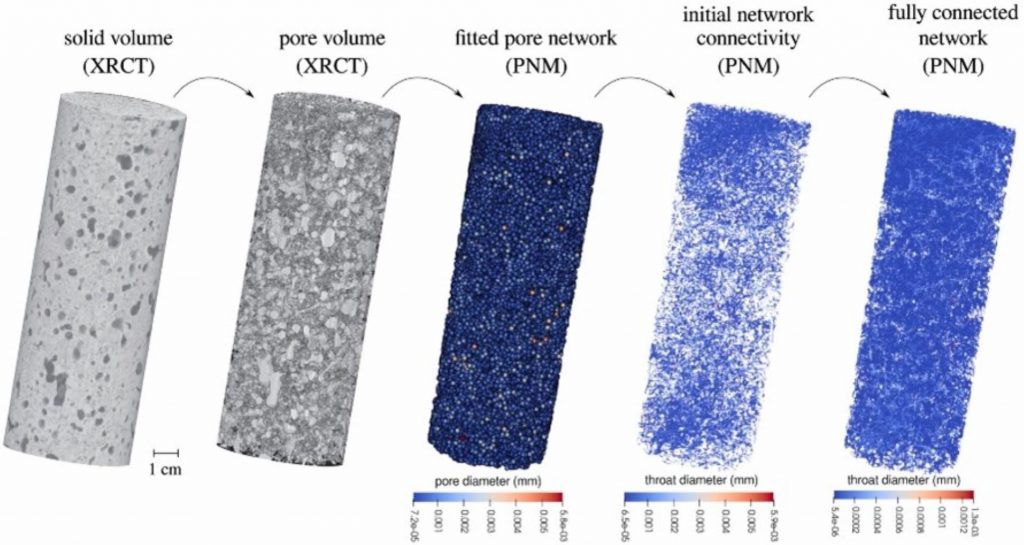
Author(s) : Eleni Stavropoulou, Cesare Griner
Supervisor : Lyesse Laloui
Journal : International Journal of Greenhouse Gas Control
Editor : ELSEVIER
Year of publication: 2024
Permanent CO2 storage in basalts through mineralisation offers a promising solution for reducing carbon emissions and mitigating climate change. This study focuses on the impact of potential mineralisation on the flow properties of the basaltic material. Fluid flow evolution before and after exposure to CO2 dissolved in seawater is measured in terms of hydraulic conductivity and permeability under field-like conditions over 1 to 3.5 months. Permeability reduction of up to one order of magnitude suggests that porosity decreases due to mineral precipitation after CO2 exposure. X-ray tomography measurements of the tested cores reveal a maximum porosity decrease of 1.5% at the given resolution (50 mm/px). To better understand eventual modifications of the connected pore network after mineralisation, fluid flow simulations are performed on the 3D pore network of the material that is reconstructed directly from the acquired x-ray images. A double porosity is proposed: macro-porosity as visible from the tomographies (pores ¿ 50 mm) and micro-porosity (pores ¡ 50 mm). To reproduce the post-CO2 exposure flow, reduction of macro-porosity is not enough. Instead, a decrease of the micro-pores is necessary by up to 43%. The experimental and numerical results suggest that potential mineralisation can substantially modify the pore space of the intact basaltic material and consequently impact storage efficiency if flow is not preserved.